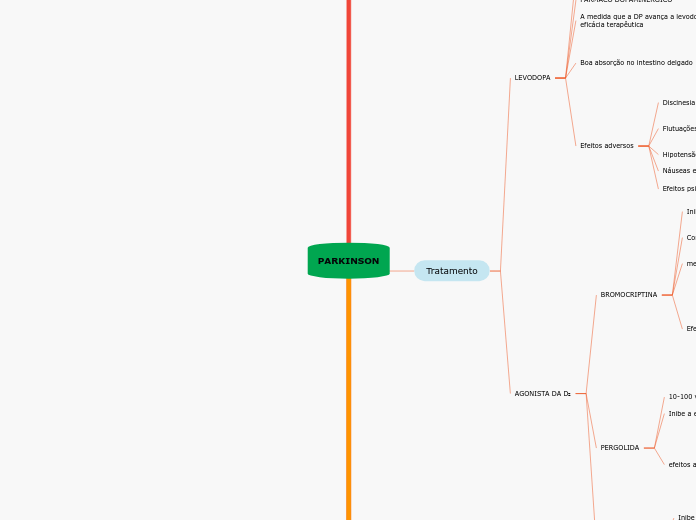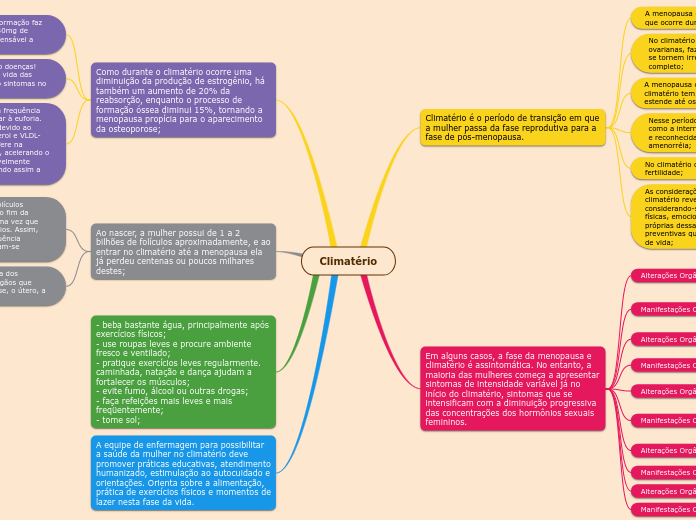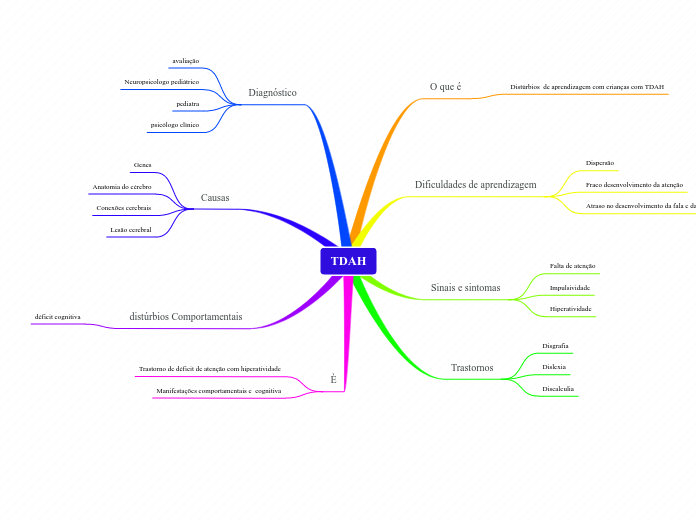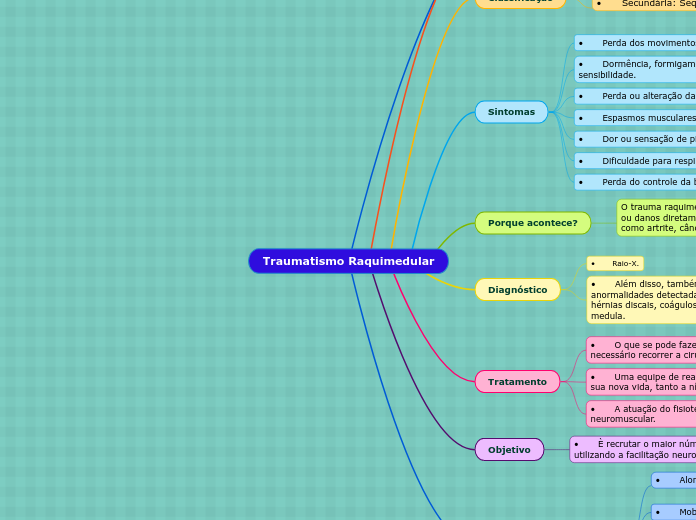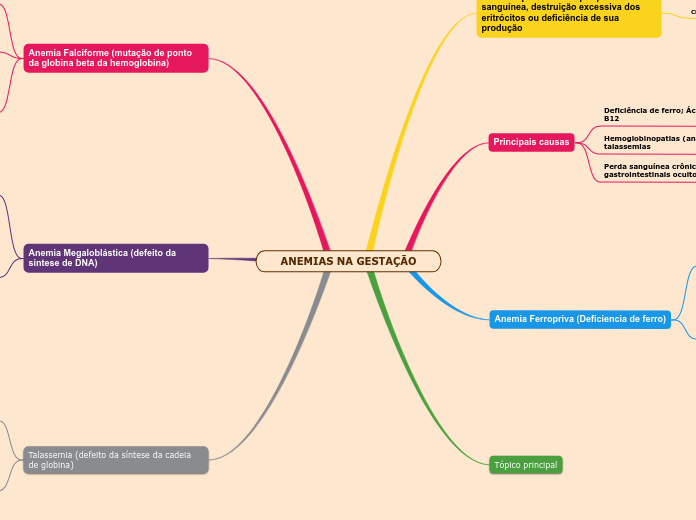PARKINSON
Fisiopatologia e sintomas DP
MPTP convertida em MPP⁺
MAO
MAO-B
REGIDEZ EM REPOUSO
TREMOR EM REPOUSO
SINAIS INICIAIS: BRADICINESIA
conexões ao músculo pelo cortex motor
TREMORES
↑ ACETILCOLINA
↓ D₂
MORTE NEURONAL
The ending of a story is essential. We all know that if the ending is weak, what happened before loses its importance. So make it unpredictable, but fair. A resolved ending answers all the questions and ties up any loose threads from the plot.
ISQUEMIA
INFLAMAÇÃO
ESTRESSE OXIDADTIVO
This is the closure section of the story.
See examples of possible outcomes below:
- all problems have been solved
- it's clear how each one of your characters ends up
- your main character is transformed by the challenge
ataque de enzimas, lipídios da membrana e DNA
Try answering these questions to come up with a closure:
- Have all the problems been solved?
- Is there a clear picture of what happens with each character in the story?
- Has the challenge transformed your main character?
- How do the characters feel in the end?
hipoxia
Try answering these questions in order for you to come up with a closure:
- Have all problems been solved?
- Is it clear what happens with all your characters in the story?
- Has the challenged transformed your main character?
- How do the characters feel in the end?
EXCITOTOCIDADE
This is the moment when the main character surpasses the last obstacle and finally faces their greatest challenge.
The climax usually follows one of these patterns:
- realization
- resolution
- choice
Type in your answer.
↑ da concentração de Ca²⁺ intracelular e ↑ de glutamato
Tratamento
The middle of the story is where you add layers of complications that will lead to the end. Reveal more about the character's journey. Did their personality go through changes? How did they overcome the challenges? And as you build up the story’s central conflict, make it more personal to that character. Also, from the middle act, you have to lead into the final act.
AGONISTA DA D₂
Your character(s) need(s) motivation in order to solve the challenge(s).
CABERGOLINA
Secondary characters also might have motivs beacuse of which they may cross path with main character or which might trigger them to help the main character.
hipotensão
baixa excreção urinária
efeito
dopaminérgico
↓ níveis séricos de PRL
PERGOLIDA
Secondary characters might also have motives that lead them to cross paths with the main character or which might trigger them to help the main character.
efeitos adversos
constipação
palpitação
alucinações
discinesia
tontura
Inibe a excreção de prolactina
10-100 vezes mais potente que a BROMOCRIPTINA
BROMOCRIPTINA
Why does your character need to confront this challenge? What does he/she expect to accomplish by solving it?
See a few examples:
- will marry in 3 days
- can fix the mistakes of the past
fármaco de substituição por PRAMIPEXOL E ROPINIROL.
PRAMIPEXOL
Subtópico
ROPINIROL
sonolência e alucinações
riscos de reações fibróticas nos pulmões
sonolência
náuseas e vômitos
meia-vida de absorção é de 0,2 a 0,5 hora
Contraindicado
Gravidez
Hipertensos
Inibe a prolactina pela adeno-hipófise
LEVODOPA
Each story has a main character and that character usually needs to solve a problem or challenge. The character's challenge is the one that creates tension throughout the story.
Efeitos adversos
Efeitos psicológicos
↑ D2
Esquizofrenia-símile em 20% indivíduos
Náuseas e anorexia
Hipotensão
Flutuações no estado clínico
Regidez
Bradicinesia
Discinesia
Paciente com uso prolongado de Levodopa
Boa absorção no intestino delgado
Type in any other challenges which other characters in the story need to face.
66% excretada na urina
Pró-fármaco
ativado- DOPA
Diminuição da inibição da MAO quando é associada a um decarboxilase
A medida que a DP avança a levodopa perde sua eficácia terapêutica
FÁRMACO DOPAMINÉRGICO
Tratamento de primeira linha para a DP e é combinada com um inibidor da: dopadescarboxilase
In most stories, there are 3 challenges. The number 3 is a mystical number symbolizing completeness. Try to come up with interesting challenges with which your character needs to struggle.
See a few examples below:
- turns into a werewolf at night
- is sent back in time
BENSERAZIDA
CARBIDOPA
BEGINNING
In the beginning of the story (or the exposition), you will need to introduce the setting and characters. You might also want to introduce the main conflict. This part of the story is important because it gives the reader necessary background information and maybe even a first insight into a character’s personality.
SETTING
The setting (time & place) of a story can change throughout the plot.
Sensory detail
Sensory details include sight, sound, touch, smell, and taste. These details are important because they create depth in your setting.
See a few examples below:
- the smell of fresh bread
- the scent of freshly cut grass
- rain falling onto the windshield etc.
Sensory details
Weather
The weather is an important element in your story because it can highly influence the ambiance and the mood of the characters.
Do these weather conditions affect the main character?
The most affected character is the main character. Write down here if he/she is affected by these weather conditions in any way. For example, if they lost a family member or their home during a hurricane, etc.
Elements of nature
Decide if you want to include an element of nature in your story. For example, a rainbow can be a very nice choice for a happy ending. The mist in a story can represent mystery and secrets. A thunder can appear in the background at the moment when the 'bad guy' of the story makes its appearance, etc.
Catastrophic event
Does your story include catastrophic weather? See a few suggestions below or add your own:
- hurricane, earthquake, storm, etc
Time
The time of the story can also change. It can describe the event of a single day or can include an entire year's plot. Anyway, don't forget to mention it.
Time of plot
Where does the story takes place?
Your story can take place wherever your imagination will take you to.
For example: in an elevator, in an enchanted forest, etc. Don't forget to give details of the environment each time the setting changes, otherwise, the story can be confusing. Also, mention the seasons as each of them has unique weather and events.
Location
CHARACTERS
Characters are essential to a good story. Usually, the protagonist(s) is/are the most affected by the plot. Introduce a character by focusing on their actions, interests, and occupation, as the physical appearance doesn't make a difference in most cases.
Character's name
Type in the name of your character.
Other
Add other qualities/attributes of the character.
Main Goal
What is your character's main goal?
fight Evilfind lovedefeat his/her enemyrule the worldmake friendstime travelmake an awesome discoveryOther
Character traits
Which traits best describe the character's personality? Choose more if necessary:
introvertedloyalkindindependentquick-thinkingadventuresomeidealisticsweet-naturedcalmrisk-takercreativewittystrictfussyweirdclumsyharshaggressivecarelessclingingcowardlycrueldeceitfulimpulsiveOther
Type of character
Choose the type of your chacter:
Protagonist (main character)Antagonist (main character's opponent)Flat (stereotypical character)Round (his/ her personality develops throughout the story)Static (doesn't evolve as a person throughout the story)Dynamic (dramatical change in personality)Confidant (the main character trusts him/ her)Foil (contrasting character who enhances the personality of another character)Other
